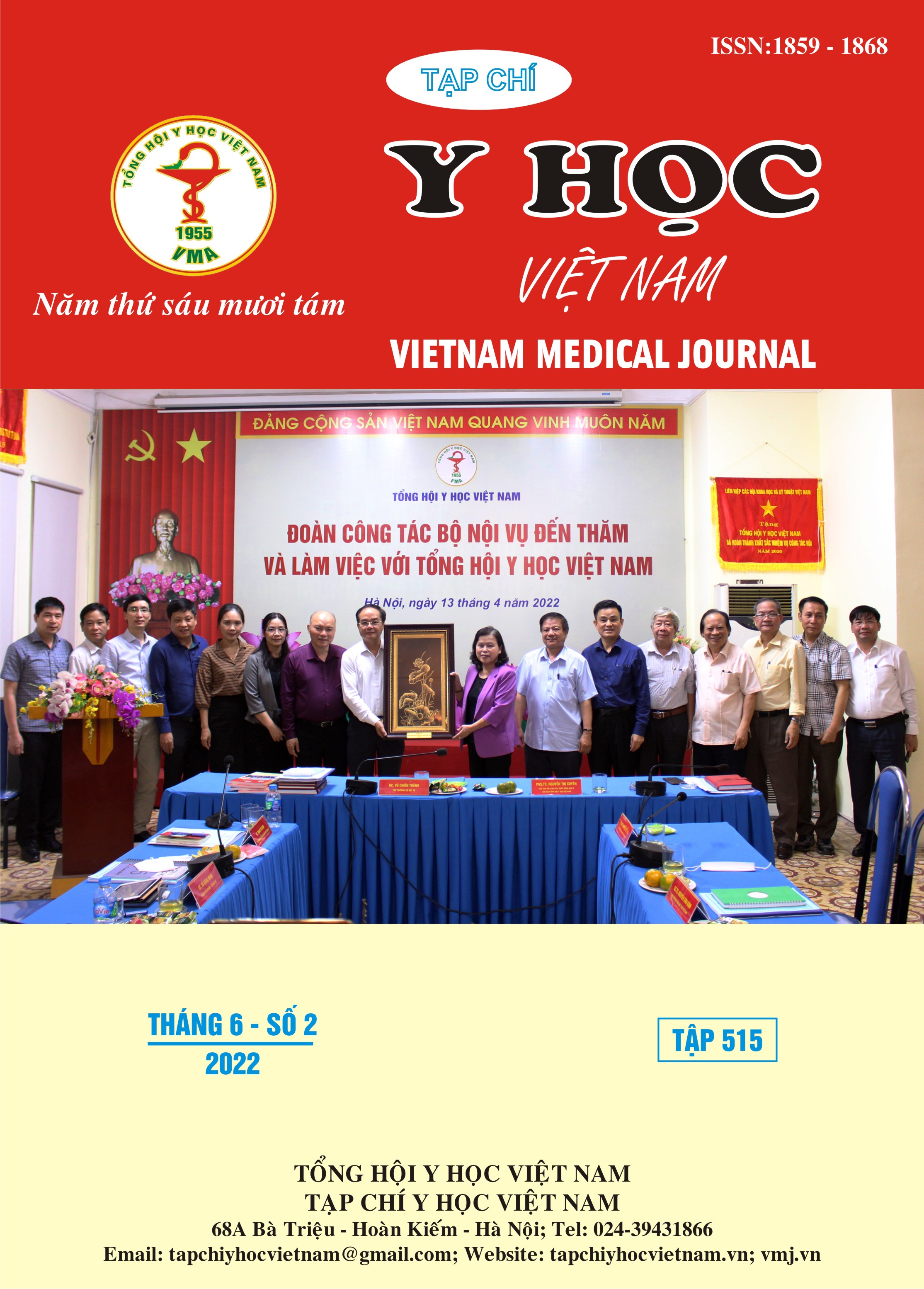CHARACTERISTICS OF BONE DENSITY, X-RAY IMAGES AND MRI IMAGES OF PATIENTS DIAGNOSED WITH VERTEBRAL BODY COMPRESSION FRACTURE AT DUC GIANG GENERAL HOSPITAL FROM 2015 TO 2018
Main Article Content
Abstract
Objective: To analyse the characteristics of bone density, X-ray images, and MRI images of patients diagnosed with vertebral compression fracture at Duc Giang General Hospital from 2015 to 2018. Method: This study employed the cross-sectional study design. We surveyed all patients diagnosed with vertebral compression fracture at Duc Giang Hospital during the data collection period from 2015 to 2018. The data was colleced from patient records using a data collection checklist. The study variables include information on the patient's socio-demographic characteristics, bone density (measured using T-Score), location of vertebra, classification, and vertebral height and kyphosis angle. Results and conclusion: The total of 173 patients (the mean age was 70.2 and 77.8% of them were female) were included in the study. 195 collapsed vertebrae were detected. The mean T-Score was -3.36 ± 1.21. The most common collapsed vertebrae were L1 (70 vertebrae) and D12 (46 vertebrae). Most of the vertebrae were wedge-shaped (149 vertebrae). The average height of the anterior wall, the middle wall and the posterior wall of the collapsed vertebra is 19.41 ± 3.63, 22.89±3.65 and 27.48±3.29 millimeters, respectively. The average reduction in height of collapsed vertebrae compared with adjacent healthy vertebrae was 30.1%. Most of the collapsed vertebrae were classified as mild and moderate fracture (according to the Genant classification), accounting for 42% and 41% of collapsed vertebrae, respectively. Research provides useful information to support doctors in the process of diagnosis and treatment vertebral compression fracture.
Article Details
Keywords
vertebral body compression fracture, bone density, vertebral hight, kyphosis angle
References
2. Nguyễn Văn Thạch, Đánh giá kết quả tạo hình đốt sống bằng cement sinh học ở bệnh nhân xẹp đốt sống do loãng xương tại Bệnh viện Việt Đức, in Kỷ yếu Hội nghị Hội Chấn thương chỉnh hình Việt Nam lần thứ IX. 2010: Hội Chấn thương chỉnh hình Việt Nam. p. 88-90.
3. Võ Văn Nho và cộng sự, Tạo hình thân đốt sống bằng phương pháp bơm cement sinh học qua da trong điều trị đau do xẹp đốt sống ở bệnh nhân loãng xương, in Hội nghị khoa học thường niên lần thứ VI: Hội nghị loãng xương thành phố Hồ Chí Minh. 2012. p. 25-32.
4. Đỗ Mạnh Hùng, Nghiên cứu ứng dụng tạo hình đốt sống bằng bơm Cêmnt có bóng cho bệnh nhân xẹp đốt sống do loãng xương. 2018, Trường Đại học Y Hà Nội.
5. Phạm Mạnh Cường và Phạm Minh Thông, Đánh giá hiệu quả của phương pháp tạo hình đốt sống qua da trong điều trị xẹp thân đốt sống bệnh lý. Kỷ yếu các công trình nghiên cứu khoa học Bệnh viện Bạch Mai, 2018: p. 69-70.
6. Trịnh Văn Cường và Nguyễn Quốc Bảo, Đặc điểm lâm sàng, cận lâm sàng và kết quả điều trị xẹp đốt sống do loãng xương bằng bơm cement sinh học qua cuống. Tạp chí Y học Thành phố Hồ Chí Minh, 2017. 21(6): p. 213-7.
7. Bozkurt, M., et al., Comparative analysis of vertebroplasty and kyphoplasty for osteoporotic vertebral compression fractures. Asian spine journal, 2014. 8(1): p. 27-34.
8. Waterloo, S., et al., Prevalence of vertebral fractures in women and men in the population-based Tromsø Study. BMC musculoskeletal disorders, 2012. 13: p. 3-3.
9. Van Meirhaeghe, J., et al., A randomized trial of balloon kyphoplasty and nonsurgical management for treating acute vertebral compression fractures: vertebral body kyphosis correction and surgical parameters. Spine (Phila Pa 1976), 2013. 38(12): p. 971-83.


